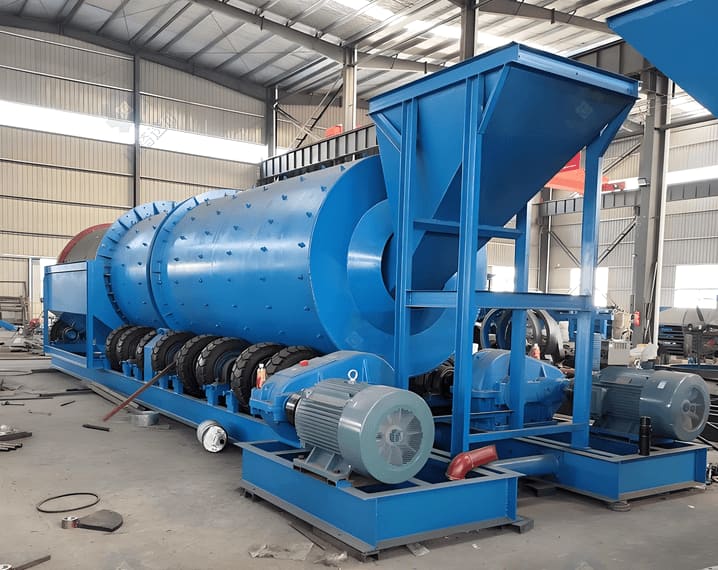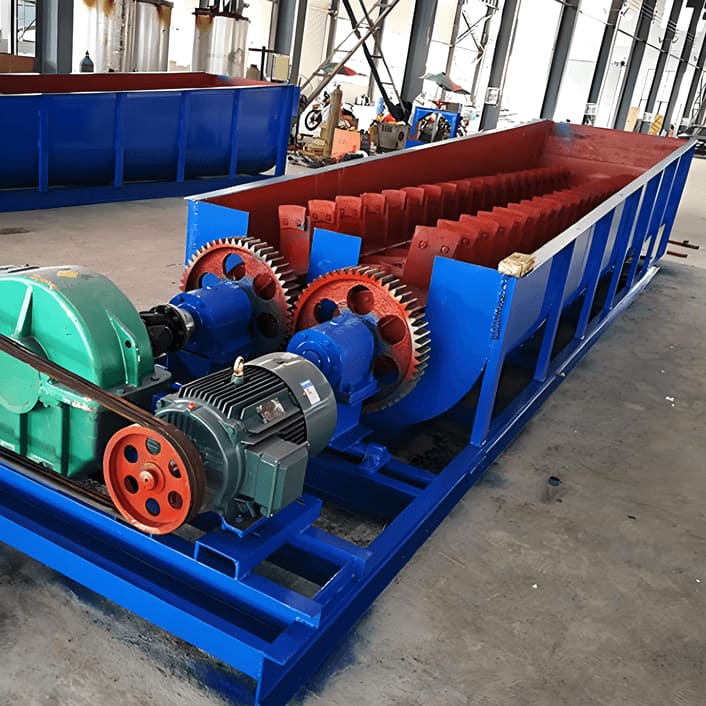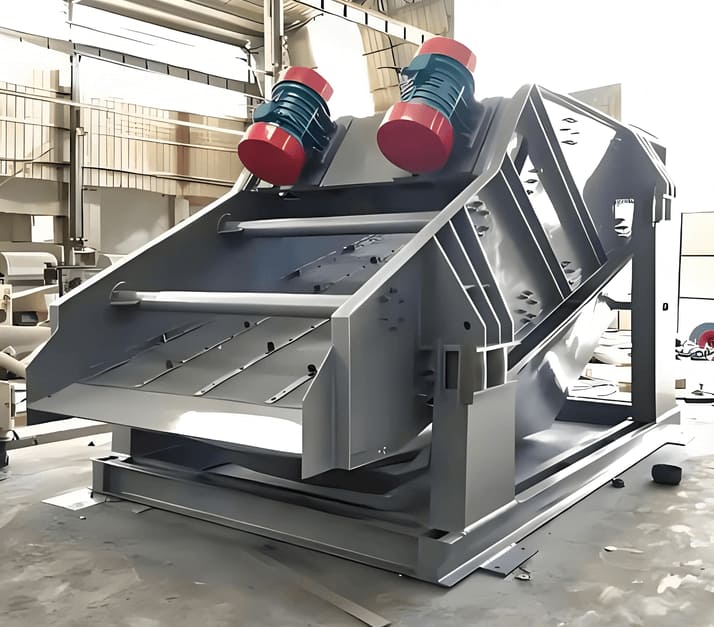In mineral processing, ore rich in clay or fine silt often leads to issues such as increased flotation reagent consumption and reduced magnetic separation efficiency. As a result, ore washing has become a key step in pre-treatment, effectively removing surface attachments through crushing and separation to improve subsequent mineral processing results. This paper systematically discusses the necessity of ore washing, equipment selection, wastewater treatment, and operational optimization to provide a reference for actual production.
Importance of the Washing Process
Ore washing is a crucial step in ore pre-treatment, primarily used to remove impurities such as clay, sand, and organic matter from the ore’s surface, thereby improving the ore grade and facilitating subsequent ore dressing or smelting. The core process and equipment selection should be determined based on the type of ore (such as gold ore, iron ore, or tin ore), the nature of the impurities, and the scale of production.
Conditions & Necessity
- Equipment anti-blocking
When ores contain excessive silt, issues such as clogging in ore bins, chutes, funnels, and crushing/screening equipment can disrupt production continuity. Implementing a washing operation becomes essential to ensure smooth operations and enhance mineral processing efficiency. - Improved sorting accuracy
If manual or sensor-based ore sorting is required, surface-adhered clay can interfere with recognition accuracy, necessitating pre-washing. - Differentiated processing
Certain ores exhibit significant differences in processability between primary slimes and coarse particles. Washing enables their separation for independent treatment, significantly improving beneficiation metrics. - Individual separation
After prolonged weathering, primary ores are often coated with clay minerals or rock decomposition products, forming cemented or muddy aggregates. Unlike conventional crushing, washing employs friction-based disintegration to liberate mineral monomers while removing surface contaminants, preparing the material for downstream processing. Beyond serving as a pretreatment step, washing can also independently enhance mineral purity.
Process Features
Ore washing is based on hydraulic immersion and mechanical agitation, combined with dispersants (when necessary) to achieve “fragmentation and separation.” Unlike crushing processes, it uses friction between ore particles rather than compression to separate them, making it suitable for materials with severe cementation or high clay content.
Types and Selection of Ore Washing Equipment
Types of Ore Washing Machine
Trommel Scrubber (Drum Washer)
The trommel scrubber (or drum washing screen) consists of a sealed rotating drum and a double-layered cylindrical screen. The drum, supported horizontally by four rollers, is driven via a pinion gear. Its inner lining features spiral ribs with gradually increasing pitch for effective agitation and material discharge.
Working Principle
Ore and water enter one end of the drum. Through soaking and rotation, clay and mineral particles are disintegrated via mutual impact and friction. High-pressure water introduced at the discharge end flows counter to the ore, further cleansing the particles. Clay and fines exit as overflow, while coarser material is lifted by a discharge wheel onto a conical screen for classification
Key Parameters
- Rotation speed:50%–60% of critical speed.
- Water volume:Adjusted to ensure thorough washing while maintaining overflow density at 20%–25%.

Trough Washer (Log Washer)
Resembling a spiral classifier, the trough washer employs discontinuous paddle-shaped blades on two counter-rotating shafts to scrub particles.
Working Principle
Slurry enters from the lower end, where the blades disintegrate clay-cemented clumps. High-pressure water introduced at the upper end rinses liberated particles. Clay exits as overflow, while cleaned coarse material is conveyed upward for discharge.
Applications
Log washing machines are particularly suitable for processing low-density, high-mud-content ores, such as kaolin slurry and medium-fine grain materials and silica sand washing. This equipment has a large processing capacity and high washing efficiency, and can easily handle materials below 75 mm. A washing water pressure of 147-196 kPa is required to ensure optimal washing results.


Vibrating Washing Screen
Vibrating washing screens are also an effective type of washing equipment. When equipped with pressure washing water pipes, bar screens, rod screens, roller screens, and vibrating screens can all be used for washing ore, particularly suitable for processing ore with low clay content and weak adhesion.
Grizzly screens are primarily used for screening and washing raw ore before coarse crushing, roller screens are suitable for screening and washing medium-sized ore before medium crushing, while vibrating screens are commonly used for processing ore before medium or fine crushing. Typically, a water pressure of 0.2–0.3 MPa is applied, with water consumption controlled at 1–2 m³/t of ore. These devices can meet basic ore washing requirements.
Selection of Ore Washing Equipment
The washability of ore is influenced by factors such as the plasticity index of clay, which determines the selection and efficiency of ore washing equipment. The processing capacity of commonly used ore washing equipment is mainly affected by the washability of the ore.| Ore Type | Clay Properties | Clay Plasticity Index K | Required Ore Washing Time/min | Unit Power Consumption/kW•h•t-1 | Ore Washing Efficiency t•kW-1•H-1 | Available Ore Washing Equipment |
| Easy-to-wash ore | Sandy clay | 1-7 | <5 | <0.25 | 4 | Vibrating screen |
| Moderately washable ore | Clay can be rubbed between your hands until it crumbles. | 7-15 | 5-10 | 0.25-0.5 | 2-4 | Trommel Scrubber or log washer |
| Difficult-to-wash ore | Clay sticks together in clumps and is difficult to rub between your hands until it crumbles. | >15 | >10 | >0.5-1.0 | 1-2 | Log washer washes twice, and Use in conjunction with trommel scrubber |
Process Optimization and Wastewater Treatment
7 Key Configuration Principles for Clay-Rich Ores
1. Feeding Requirements for Vibrating Screens
When using vibrating screens as washing equipment, to ensure effective washing, a feed device capable of adjusting the feed rate should be installed before the screen to ensure uniformity of the screen surface layer.
2. Material Pre-Wetting
To improve washing efficiency, water can be sprayed onto the material at the feeder of the washing equipment. However, the water volume should not be excessive to avoid transportation difficulties.
3. Selection of Equipment Installation Angle
The installation angle of spiral classifiers and trough scrubbers should be reasonably selected to reduce the moisture content in the return sand, facilitating subsequent transportation and storage.
- When the moisture content of return sand is high, belt conveyors with excessive inclination angles should not be used for transportation; generally, an angle less than 12° is preferable.
- If return sand is transported in a mixture with dry material, the conveyor inclination angle may be appropriately increased.
4. Slurry Pump Adaptability
Due to significant fluctuations in flow rates during mineral washing operations, slurry pumps should be selected with measures to adapt to flow rate changes, such as variable frequency speed control.
5. Maintenance and Inspection
Mineral washing equipment experiences rapid wear and requires frequent maintenance; the configuration should include equipment and space to accommodate maintenance needs.
6. Handling Difficult-to-Wash Mud Clumps
For ore containing a large amount of difficult-to-wash mud clumps, if it is difficult to select ideal washing equipment, manual sorting operations can be set up before washing to remove large pieces of difficult-to-wash mud clumps.
7. Plant Cleanliness and Wastewater Disposal
The operating platforms and floors of the washing plant should be equipped with washing facilities and corresponding wastewater disposal systems.
Ore-washing Wastewater Treatment
Ore-washing wastewater treatment is a critical step in the mineral processing process. For general ore-washing wastewater, coagulation and sedimentation are typically used. The supernatant from the sedimentation tank can be recycled, while the settled grit can be used as raw material for building materials. For ore-washing wastewater containing heavy metals, more complex treatment processes such as coagulation, sedimentation, oxidation, and ion exchange are required to effectively remove the heavy metals and prevent environmental pollution.
By strategically selecting equipment and optimizing operational parameters, washing not only resolves clay-related bottlenecks but also elevates overall beneficiation performance while adhering to environmental standards.
